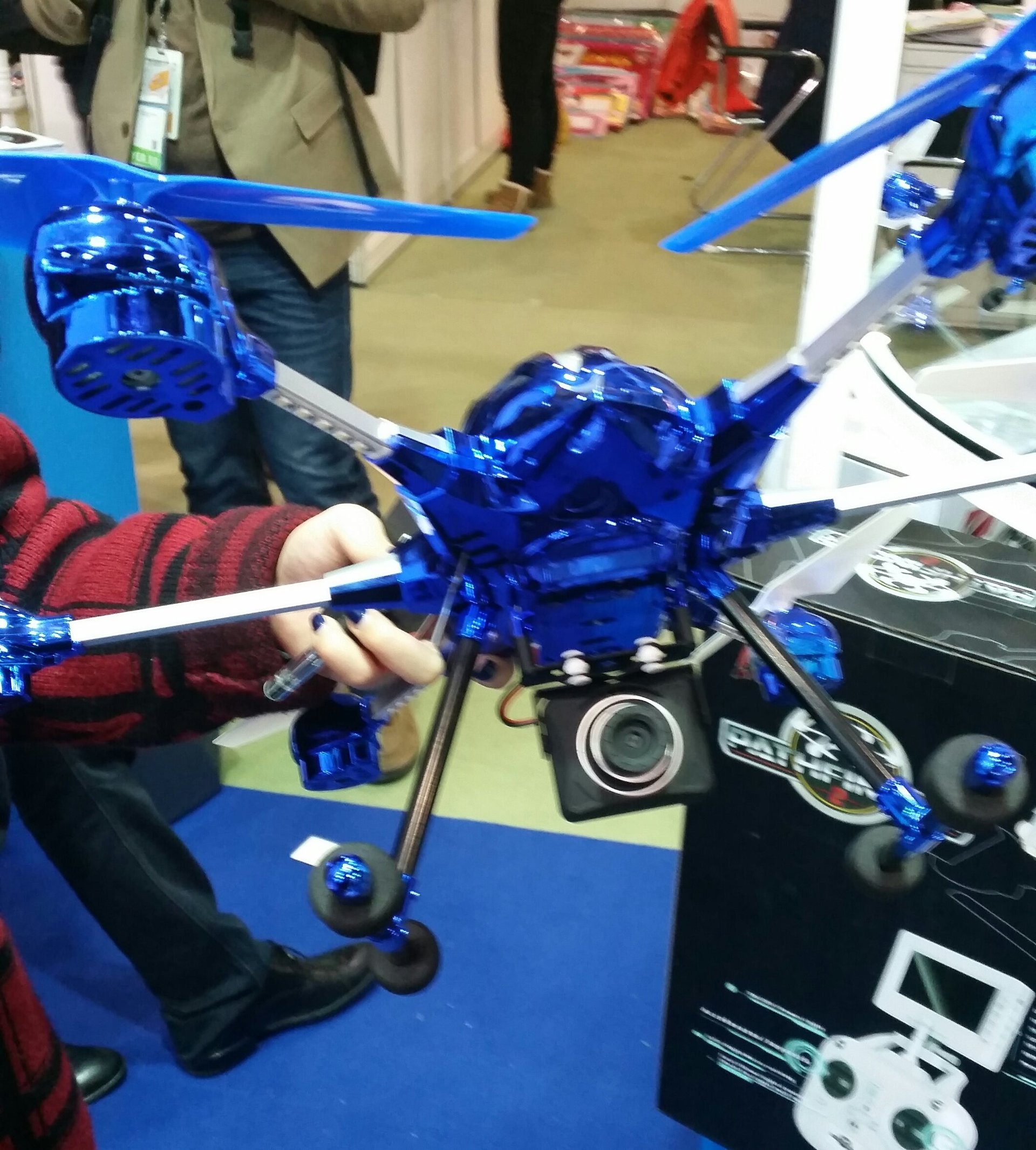A swarm of incredibly cheap camera drones is buzzing your way
HONG KONG—The annual Hong Kong Toy and Games Fair bills itself as Asia’s “biggest toys event” and provides a chance for manufacturers, particularly those from mainland China, to showcase their very newest designs, take orders from the world’s largest toy companies, and then line up their manufacturing schedule for the year. What’s hot at Hong Kong toy fair is often an indicator of what toys will be best-sellers in the year ahead, and particularly at the all important Christmas season.


HONG KONG—The annual Hong Kong Toy and Games Fair bills itself as Asia’s “biggest toys event” and provides a chance for manufacturers, particularly those from mainland China, to showcase their very newest designs, take orders from the world’s largest toy companies, and then line up their manufacturing schedule for the year. What’s hot at Hong Kong toy fair is often an indicator of what toys will be best-sellers in the year ahead, and particularly at the all important Christmas season.
Judging by the wares on display, 2015 will be the year of the super-cheap camera-equipped drone, capable of traveling up to several hundred meters and priced so low that consumers could potentially buy them for $100 or less.

While drones in general were a hot holiday gift in 2014, this year’s newest models fly farther and easier, take clearer photos, and cost much, much less.
Take the hand-sized “Flyfrog” quadrocopters from Apex Toys in Shenzhen. Incredibly light and equipped with a camera and a 2GB memory card, they can fly up to 50 meters away from their operator, be controlled by a mobile phone and take about 10 minutes of video. The so-called “FOB cost,” or the manufacturer’s price to distributors and retail toy companies, not including shipping from China, starts at $27.
Apex, which also makes remote-control helicopters, is new to drone design. “This is the first time we’re showing original designs, made by ourselves,” explained Canny Lee, the pink-lipsticked saleswoman at the Apex booth. “Our boss is an engineer, and most of our products are designed by him.”
Manufacturers in the newly crowded field are trying to create new features to stand out. Options at the Hong Kong exhibition included a voice-operated drone from Fineco that can understand 16 languages, or the “battle drones” from Guangdong Attop Technologies.

But really, “price is the big competition,” said Jodie, a young sales woman from Huajun Aeromodelling in Guangdong, another helicopter-turned-drone manufacturing specialist. (A disproportionate number of the English-speaking sales people at the toy fair are young and female.)
Huajun has a spidery-looking six-legged camera drone of its own that carries a HD camera, flies for 500 meters and has a “FPV” (for first person view) screen so you can see what it’s filming—FOB price $46. A smaller four-legged camera drone, without the FPV option or the HD camera, goes for $15.60.
This flood of inexpensive, camera-carrying drones is sure to be welcomed by tech enthusiasts who don’t want to spend hundreds or thousands of dollars on a professional-grade aerial photography kit—but they could also create plenty of problems. After all, they present plenty of ways for users to observe the world, without having to actually be that close to other individuals—from the pesky “harass your older sister in her room” to the potentially illegal “spying on your neighbor who is having an affair” to just cruising over a beach crowd that doesn’t want to be filmed.
Most governments have yet to pass any laws on personal camera drones, besides banning their use in or near airports. The British government’s advice to users, which mostly amounts to “use good judgment” and “try not to make anyone angry” is pretty standard (although California is one exception). As this swarm touches down around the world, expect some ugly confrontations between man and machine.